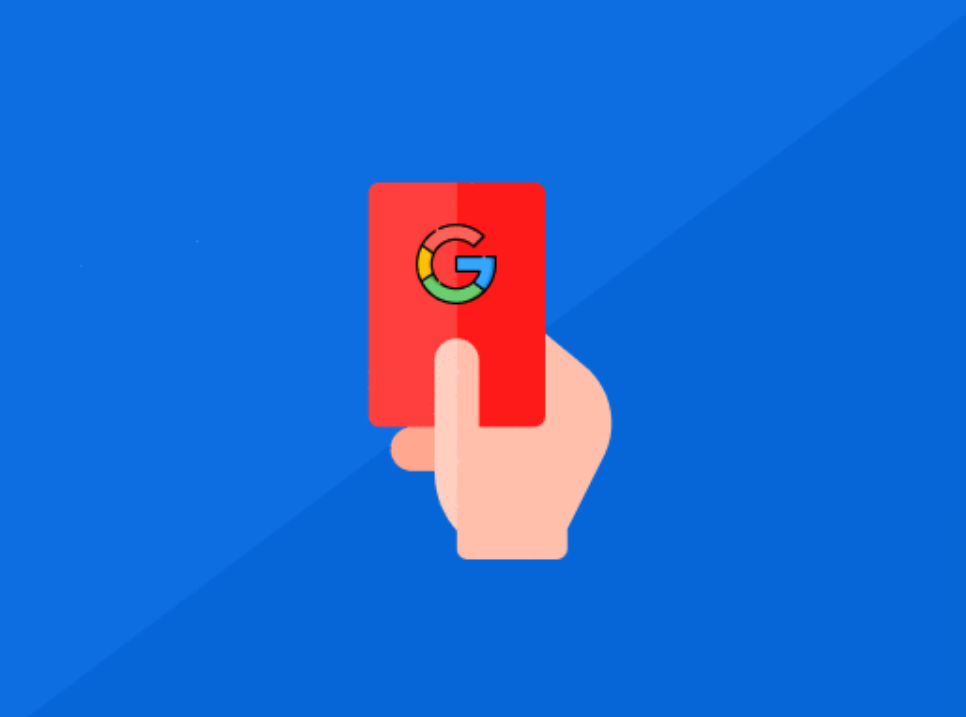Getting a Google penalty can feel like stepping on a virtual landmine—one moment you’re riding high in the rankings, and the next, your traffic drops like a rock. But what exactly is a Google penalty, and how can you prevent your site from becoming its next victim? Let’s dive into what you need to know.
What Is a Google Penalty?
In simple terms, a Google penalty is a manual action taken by Google’s webspam team against a website that has violated Google’s webmaster quality guidelines. These guidelines serve as the rules of the game, and if you break them, Google might drop your site’s rankings or, worse, remove it entirely from search results.
It’s important to note that a Google penalty is not the same as an algorithm update. While updates like Panda or Penguin affect how Google ranks pages, penalties are deliberate actions taken by human reviewers when they spot a site trying to manipulate search rankings.
Google’s machine learning system is highly efficient, catching 99% of spam content every day, which amounts to around 40 billion spam pages. But for the 1% that slip through, manual actions act as the final layer of defense, making sure spammy sites don’t get away unscathed.
Why Google Penalties Matter
Imagine this scenario: Your website suddenly stops showing up on Google search results. Traffic plummets, conversions dry up, and your online credibility tanks. That’s the reality of getting hit with a Google penalty.
Google penalties are designed to deter websites from using underhanded tactics like paid links, auto-generated content, and other black-hat SEO strategies. When a site uses these tactics, it may achieve short-term gains, but the long-term consequences can be devastating. Without visibility on Google, you’re missing out on valuable traffic and potential customers.
That’s why it’s crucial to understand not only what causes these penalties but also how to avoid them in the first place.
How to Avoid Google Penalties: Best Practices
If you want to keep your website in Google’s good graces, there are a few key strategies to follow:
Steer Clear of Paid Links
Backlinks are one of Google’s strongest ranking signals. However, buying links or participating in link schemes to artificially inflate your site’s authority is a major no-no. If Google detects paid links pointing to your site, you could face severe penalties.
Instead of buying links, focus on earning them through high-quality content and natural relationships. Become an authority in your industry, and the backlinks will follow. If you’re ever unsure about the quality of a link you’re adding, use the rel=”nofollow” attribute to prevent passing PageRank and avoid any potential penalties.
Platforms like Adverlink.net offer a better alternative by connecting advertisers with reputable publishers. Instead of spammy paid links, they use high-quality, natural backlinks to improve your site’s domain authority—without risking a penalty.
Avoid Auto-Generated Content and Article Spinning
Pumping out tons of content can seem like a great way to boost your SEO, but quality matters more than quantity. Auto-generated content—produced by software to mimic human writing—or spun articles that just swap out synonyms and rearrange sentences, are easy for Google to detect and penalize.
These methods might save you time and money, but they produce low-quality, unreadable content that offers little value to users. If you’re serious about avoiding penalties, focus on creating original, engaging content that both humans and algorithms will love.
Focus on Long-Term Quality
While some spammy websites might get away with using manipulative tactics for a while, it’s only a matter of time before Google catches up with them. The benefits of black-hat SEO are fleeting, and once your site is penalized, recovering can be a long, uphill battle.
The best approach is to play the long game. Prioritize quality over quantity, and focus on creating content that delivers real value to your users.
FAQs About Google Penalties
What causes most penalties today?
The most common causes of Google penalties include:
- Unnatural links to your site: Google penalizes sites that have a pattern of unnatural or manipulative backlinks.
- Unnatural links from your site: Just as inbound links can trigger penalties, linking out to low-quality or spammy sites can also get you penalized.
- Thin content: Auto-generated or spun content, along with pages that provide little to no value, are major red flags for Google.
How do I know if my website has been penalized?
You’ll be notified via email if your site receives a manual action, or you can check Google Search Console under the “Security & Manual Actions” section.
How do I recover from a penalty?
If you’ve received a manual action, you’ll need to fix the issues flagged by Google and submit a reconsideration request. In Google Search Console, review the pages affected, correct the problem, and then request a review with detailed information about the fixes you made.
How Aysa.ai, Aysa.ro, and Adverlink.net Can Help
Recovering from a Google penalty is no easy feat, but with the right tools, you can bounce back stronger than ever. Here’s how Aysa.ai, Aysa.ro, and Adverlink.net can help you avoid or recover from penalties:
- Aysa.ai: Use AI to analyze your content and ensure that it’s high-quality, relevant, and free of spammy tactics. Aysa.ai can also identify content opportunities that align with Google’s quality guidelines, helping you avoid penalties and build a robust SEO strategy.
- Aysa.ro: Conduct thorough content audits to weed out thin or low-quality pages. With Aysa.ro, you can make sure that every page on your site delivers value to users, keeping you in line with Google’s webmaster guidelines.
- Adverlink.net: Build a strong backlink profile the right way. With Adverlink.net, you can get high-quality backlinks from reputable publishers, improving your domain authority without risking a penalty.
By following these best practices and leveraging the right tools, you can keep your website penalty-free and ensure long-term success.

